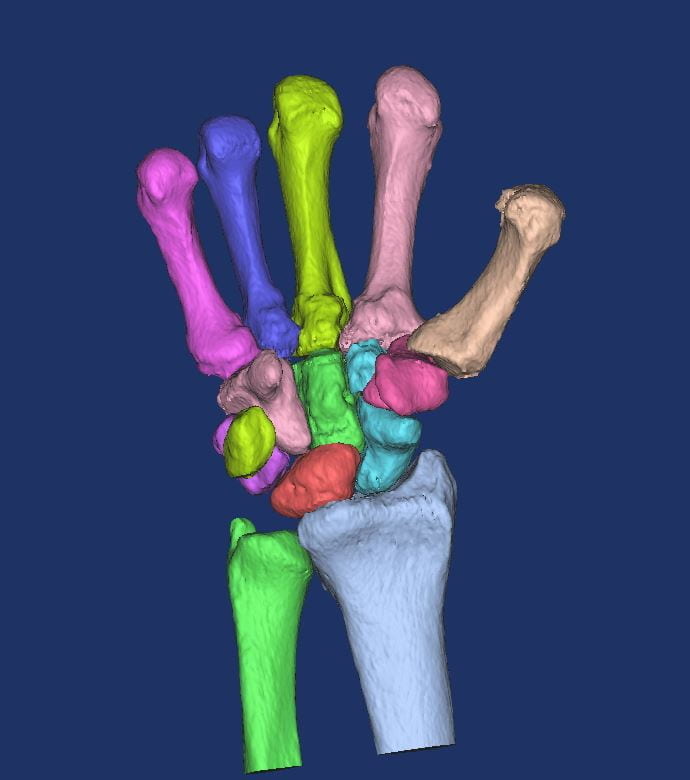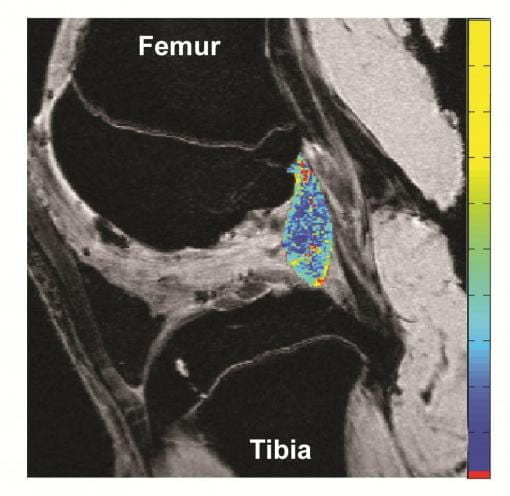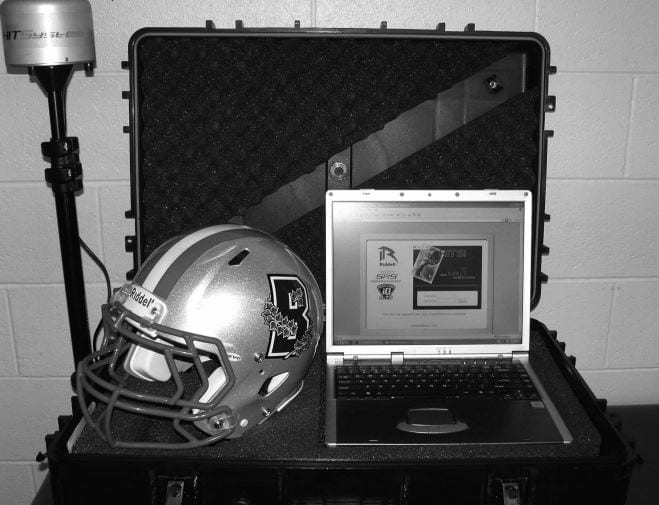
OUR FOCUS:
HANDS, KNEES, AND SPORTS
Upper Extremity

The wrist and hand are complex neuromuscular systems for which our understanding of the biomechanics and pathomechanics remain limited. Our focus has been to develop novel imaging approaches in order to quantify in vivo kinematics. Our current studies include:
- Normal mechanics and osteoarthritic pathomechanics of the first carpometacarpal (CMC) joint. This work is presently supported by NIH/NIAMS.
- Developing toy controllers that provide physical therapy through play for children with cerebral palsy and related neuromuscular afflictions. This work is presently supported by NIH/NICHD.
- Pilot studies evaluating the feasibility of tracking upper extremity skeletal motion using our high-speed biplane radiography system (XROMM).
Knee Injuries & Treatments

Knee joint injuries are extremely common and place the patient at risk for post-traumatic osteoarthritis. The reason for this is unknown and there are currently no therapeutic options that reduce this risk. The focus of the Knee Injury Laboratory is to use state of the art technologies to understand the interactions between the biological results and mechanical changes that occurs post-anterior cruciate ligament (ACL) injury to develop new intervention strategies to minimize post-traumatic osteoarthritis and to prevent knee injuries. Our current studies include:
- Effects of initial graft tension on ACL reconstruction [NCT00434837]: The effects of initial graft tension on surgical outcome following ACL reconstruction are being evaluated in this prospective, randomized, controlled trial which includes imaging modalities to evaluate changes in cartilage health. This work is presently supported by NIH/NIAMS.
- Bio-enhanced ACL repair and reconstruction: In collaboration with Dr. Martha Murray at Boston Children’s Hospital, we have developed a means to stimulate ligament and graft healing using an extracellular matrix hydrogel and are currently optimizing these methods for eventual clinical use. This work is presently supported by NIH/NIAMS.
- Lubricin supplementation for the prevention of post-traumatic osteoarthritis: In collaboration with Dr. Gregory Jay, we are evaluating the effects of exogenous lubricin injections following ACL and meniscal injuries on cartilage health in translational models. This work is presently supported by Department of Defense and the NIH/NIAMS.
- Non-invasive assessment of ligament healing in vivo: We are developing and validating a novel magnetic resonance imaging protocol to measure the biomechanical properties of healing tissues. This work is presently being funded by the NIH/NIGMS.
- Knee biomechanics during a jump-cut maneuver; Effect of ACL surgery and sex: We are evaluating differences in joint contact mechanics using biplanar videoradiography (XROMM) when ACL injured and ACL reconstructed subjects perform an activity known to challenge the ACL (XROMM Animation of Jump-Turn Maneuver). This work is presently being funded by the NIH/NIAMS and NIH/NIGMS.
Sports Concussion and Equipment Performance

Sports injury prevention through the science of protective equipment has been a long-standing interest of the lab.
- Inventors and developers, in association with Rick Greenwald PhD and Simbex, of the Head Impact Telemetry (HIT) System. The first, and most extensively used, device for measuring head impact biomechanics and exposure in helmeted team sports.
- Evaluation of wood versus non-wood baseball bat performance to address concerns of the effects of increased bat performance on player safety. This work is presently supported by National Operating Committee on Standards for Athletic Equipment (NOCSAE) and USA Baseball.
- Conducting laboratory evaluations of head accelerations associated with various stick checks experienced in girl’s lacrosse. These data will provide scientific evidence to assist governing bodies, rule making bodies, coaches and parents in making informed decisions on all issues related to protective head gear in the sport of girl’s lacrosse. This study is currently funded by NOCSAE and US Lacrosse.